Apartment guru • Szeged • Hungary
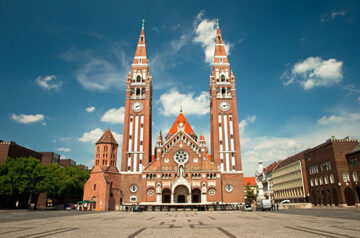
Szeged Cathedral
The imposing and decorative building of Szeged, Szeged Cathedral, or more officially the Cathedral of Our Lady of Magyars, is the only church in our country that was built in the 20th century. With a height of more than 80 meters, the neo-Romanesque style church won the title of the 5th tallest church in Hungary.
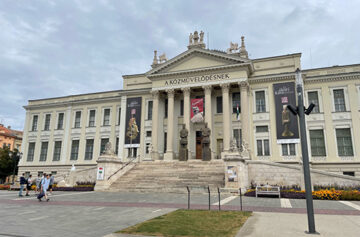
Móra Ferenc Museum
Built in 1896 during the millennium building boom, the neo-classical Palace for Public Culture in Szeged is a dignified structure with a Corinthian-columned portico and light-colored walls. Originally intended for the Somogyi Library and city museum, it expanded its offerings under the leadership of Ferenc Móra from 1917 to 1934. Today, the museum features ethnography, natural history, fine art, and temporary exhibitions related to Szeged and its surroundings.
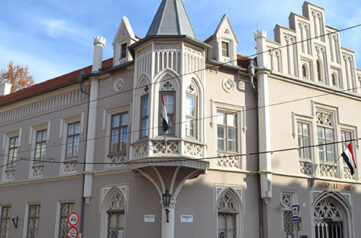
Black House
The Black House, named after its dark gray color, awaits culture lovers in the center of Szeged. Built in 1857 by Ferdinand Mayer, the house currently functions as a museum exhibition space, where, in addition to historical exhibitions, fine art exhibitions are regularly held. The Móra Ferenc Museum's historical, literary history and applied arts materials are housed here.
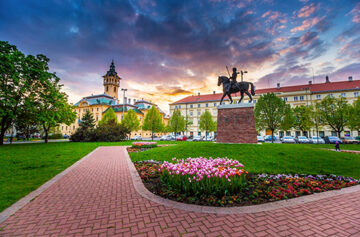
Szechenyi Square
Széchenyi Square is a centrally located park square in Szeged. The area is partially closed to traffic, so it can be an excellent location for a relaxing walk, as well as perfect for those who would like to spend their free time in the city center, yet in a green area. The square is rectangular, nearly 50,000 square meters in size, and is joined by the most famous pedestrian street in Szeged, Kárász Street. Several public buildings can be found in its neighborhood, including the town hall, the courthouse, and the main post office, as well as numerous shops and entertainment venues. Széchenyi Square is often home to various festivals and fairs, as well as city holidays.
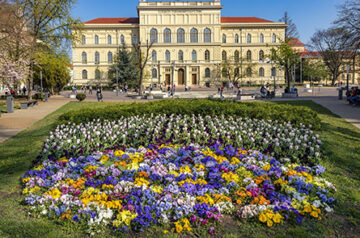
Dugonics Square
One of the central squares of Szeged is Dugonics Square, named after András Dugonics, the Piarist priest-teacher. There is also a statue in his honor on the square, which was made from a public donation and was the settlement's first public statue, and the Nagyárvíz centenary was also located here. In the center of Dugonics square is the main building of the University of Szeged, and in front of it you can see the statue of Attila József, who was one of the students of the university in 1924. In addition, in front of the institution stands the statue of the Nobel Prize-winning Hungarian doctor Albert Szent-Györgyi, who was awarded an honorary doctorate at the University of Szeged several times.
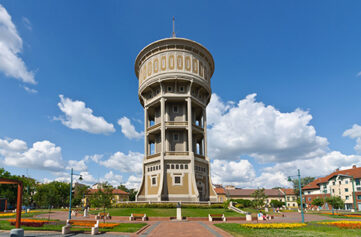
Szeged Water Tower
Thanks to the special style of the Szeged Water Tower, it is quite a typical building of the city. The water tower built in 1904 based on the plans of Szilárd Zielinski, who is also referred to as a pioneer of reinforced concrete construction, is the centerpiece of Szent István Square in Szeged. The tower is 54.9 meters high and is made of reinforced concrete throughout, including the entrance door and the flagpole at the top. The object, capable of storing slightly more than 1,000 cubic meters of water, still performs its original function to this day, and it can also be visited.
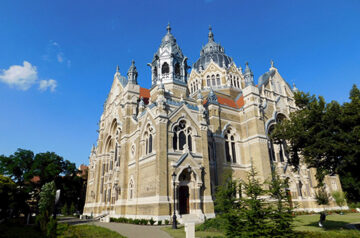
New Synagogue
Built in 1903, the New Synagogue prominently features the biblical commandment "Love your neighbour as yourself" in Hebrew and Hungarian, a testament to Chief Rabbi Immá-nuel Löw's influence on its design. The interior is adorned with unique elements, such as painted glass windows, a beautiful glass dome, and a harmonious blend of ivory, gold, and blue ornaments. This remarkable synagogue also offers excellent acoustics, making it a special venue for organ and light musical concerts.
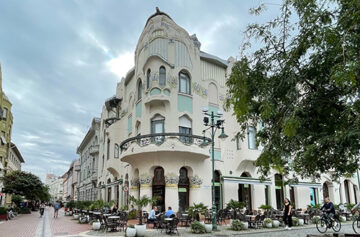
Reök Palace
In 1907, architect Ede Magyar, at the age of thirty, created the iconic Reök Palace, a masterpiece of Hungarian Art Nouveau commissioned by water engineer Iván Reök, Mihály Munkácsy's nephew. The building's central theme is water, evident in the blue water lilies adorning the white facade, the balcony rails resembling water-plants, and the diverse wall surfaces mimicking waves. Today, the palace serves as the Regional All-Arts Centre, hosting exhibitions featuring renowned artists like Picasso, Goya, Chagall, and Rembrandt, as well as various cultural events and musical programs.
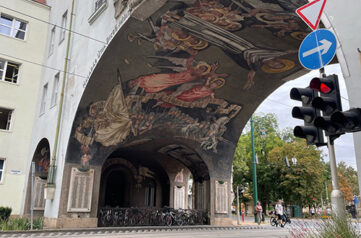
Aradi Vértanuk Square
The square prominently features an equestrian statue of Ferenc Rákóczi II, leader of the War of Independence, along with the battle-themed slogan. Nearby, you'll find the Battle of Szöreg memorial column, honoring the thirteen generals executed in Arad, and the Heroes' Gate, a memorial for World War I soldiers adorned with war-themed frescoes by Vilmos Aba-Novak. The square also houses a memorial column commemorating the 1956 Revolution, initiated by Szeged's students, and is surrounded by university buildings, including the Faculty of Science and Informatics, once a Piarist grammar school.
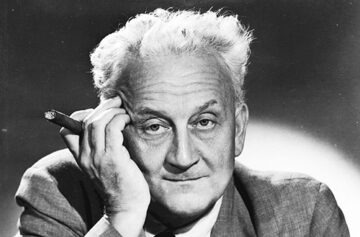
Szent-Györgyi Albert Memorial Room
Albert Szent-Györgyi, a renowned biochemist, conducted groundbreaking research at the University of Szeged in the 1930s. His discovery of vitamin C in Szeged paprika led to him being awarded the Nobel Prize in Physiology or Medicine, making him the only Hungarian scientist to receive this honor for work conducted in Hungary. Visitors can explore a memorial room at the Faculty of Medicine and a statue erected in his honor in 2013 on Dugonics tér.
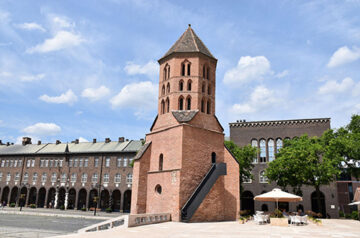
Saint Demetrius Tower
The Saint Demetrius Tower, Szeged's oldest architectural relic, dates back to the 11th century and features Roman and Gothic elements. Saved from demolition during the Votive Church's construction, it now serves as the church's baptistry, adorned with "Baptism of Christ" frescoes by Vilmos Aba-Novák. Inside, visitors can explore interactive exhibitions on baptism's history and the tower's architectural evolution, including the 12th-century Stone Lamb, the city's oldest sculptural monument.
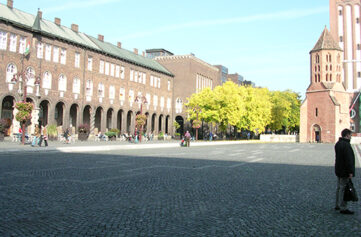
Dóm Square
Designed by Béla Rerrich between 1928 and 1930, this square in Szeged, with the same area as Venice's Saint Mark Square (12,000 m2), is bordered by elegant northern European-style buildings. It houses the National Pantheon, featuring over a hundred statues representing Hungarian historical and cultural figures under its arcades. The square is also home to the Open Air Festival, the largest "star-roof theatre" in Hungary, which has entertained audiences with a variety of theatrical performances since 1931.
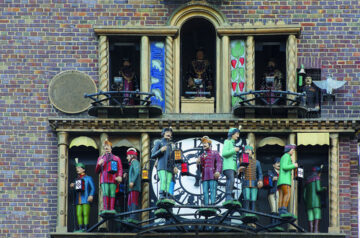
Musical Clock
Crafted by watchmaker Ferenc Súry, this unique musical clock made its debut at the 1936 Open Air Festival. Located on the upper level of a building opposite the Votive Church's main entrance, it symbolizes medieval universities and reenacts the school-leaving ceremony for graduating students twice daily at 12:15 and 17:45, with university council members and graduates participating. The clock's basswood figures, carved by József Kulai, depict famous Hungarian personalities, accompanied by the melody of the renowned Hungarian student song "Ballag már a vén diá...," and it plays the song "Szeged hírs város" (Szeged is a famous city) as a signal every hour.
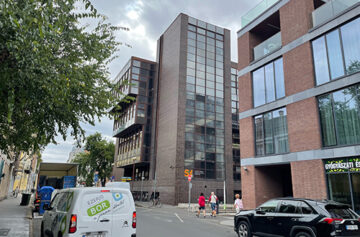
Somogyi Library
In 1881, Károly Somogyi, a prebendary of Esztergom, donated his priceless collection of 43,701 books to aid in Szeged's post-flood recovery. Initially housed in various locations, the collection eventually found a permanent home in Dóm Square in 1984. Over the past 130 years, it has grown to over a million documents, with the oldest piece being a 1492 codex called Missale Pragense, making it a valuable cultural resource for the city.
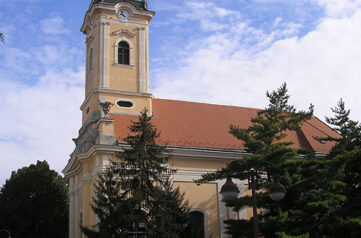
Serbian Orthodox Church
Situated on the northern side of Dóm Square near the River Tisza, the Serbian Orthodox Church has a long history in Szeged. Serbians settled in the city during the Middle Ages, and by the 18th and 19th centuries, they played a vital role in its commerce. The church, consecrated in 1778, boasts a single-nave, baroque-style architecture, with a richly adorned rococo iconostasis at its center, featuring one of Hungary's most beautiful pieces—an icon screen crafted by János Popovics.
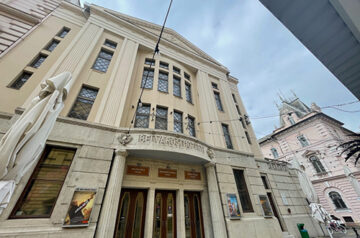
Cinema
The Cinema, an Art Deco gem designed by architect Endre Sebestyén in 1920, stands as Hungary's sole surviving purpose-built cinema from that era. Following extensive 2019 renovations, it now includes an interactive film history exhibition based on VR experiences. Equipped with cutting-edge technology and air-conditioned screening rooms, the cinema's main hall, named after Oscar-winning cinematographer Vilmos Zsigmond, offers a diverse range of films, live transmissions, and cultural events.
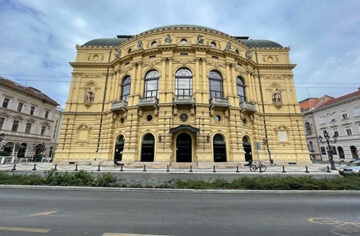
Szeged National Theater
Constructed in 1883 and meticulously restored from ruins, this theatre boasts eclectic neo-baroque architecture by Vienna-based architects Ferdinand Felner and Hermann Helmer. Its semicircular facade is adorned with allegorical figures representing theatrical art, and the interior features stunning frescoes on the ceiling, painted by Zsigmond Vajda. The theatre is divided into three sections for opera, dance, and drama, with the main building hosting operas and major plays, while a smaller theatre on Horváth Mihály Street is dedicated to drama and The Contemporary Ballet of Szeged.

Szeged ZOO
Szeged Zoo, sprawling across 45 hectares in a wooded area just 2.5 km from the city center, offers a variety of one-day programs. It showcases animals by continents, recreating their natural environments. The zoo prioritizes nature protection, education, and participates in international conservation breeding programs for endangered species, while visitors can explore a diverse range of animals, from giant anteaters and tamarins to giraffes, Asian elephants (since 2018), and Indian rhinos (since spring 2020).
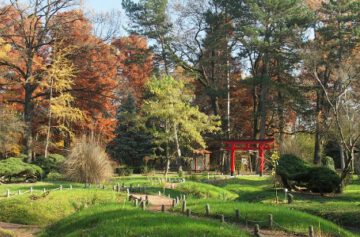
Szegedi Botanikus Kert
Established in 1922 when the University of Kolozsvár relocated to Szeged, the botanical garden spans 28 acres of agricultural land donated by the city. It serves as an educational and research collection owned by the university and open to the public. The garden systematically displays various agricultural species, takes part in the conservation of protected plants, and is home to the largest open-air stand of Indian lotus in Central Europe, thriving in a lake fed by artesian water for over 80 years.
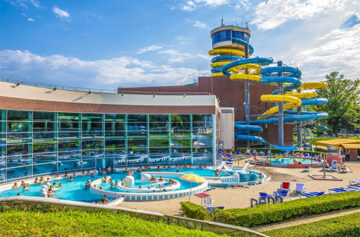
Napfényfürdő Aquapolis
The year-round "water-city" boasts a 4,400 m2 water surface and Europe's longest all-season waterslide. Opened in 2010, the facility offers thrilling attractions, including 223 and 272-meter-long giant tube slides descending from a 30-meter-high tower, accessible by lifts. Visitors can also enjoy outdoor wellness amenities, streaming passages, jacuzzi bubble beds, waterfalls, saunas, and various relaxation options in the "silent wellness" section of the bath.
www.apartmanguru.eu